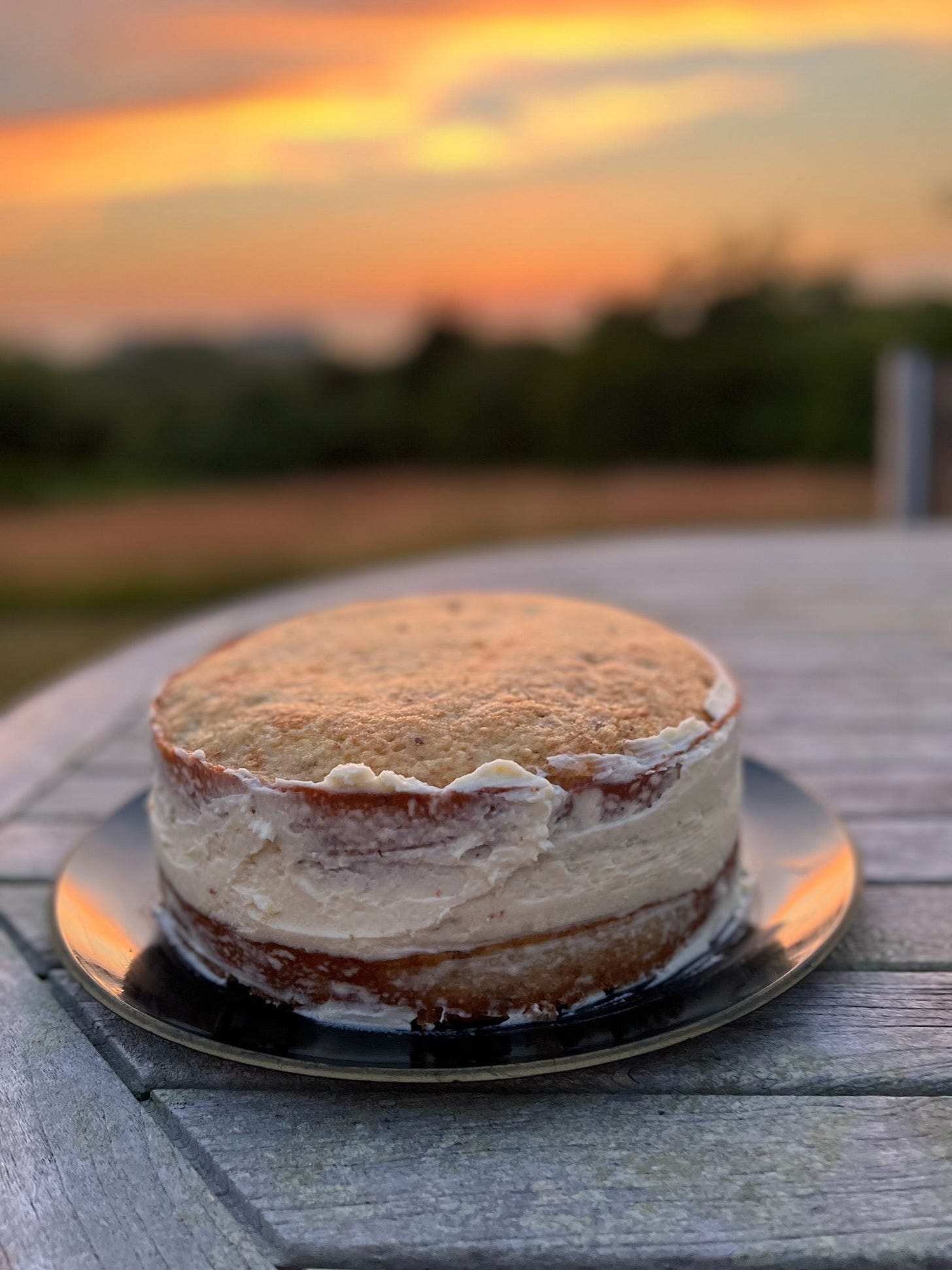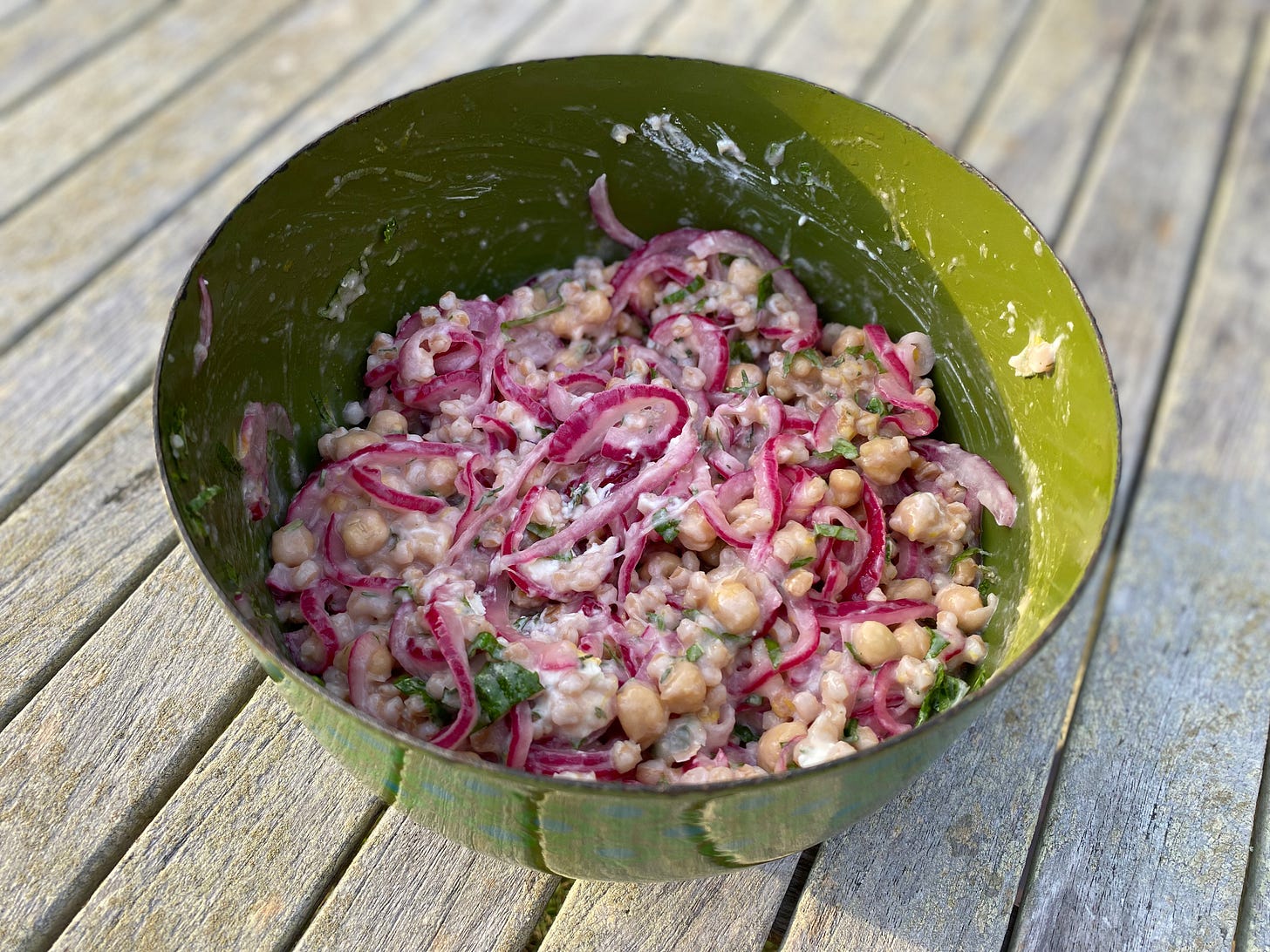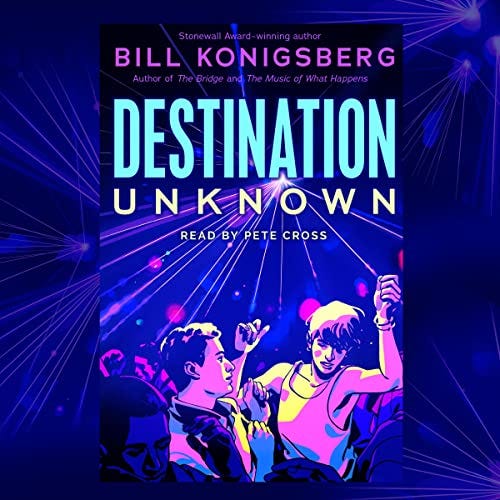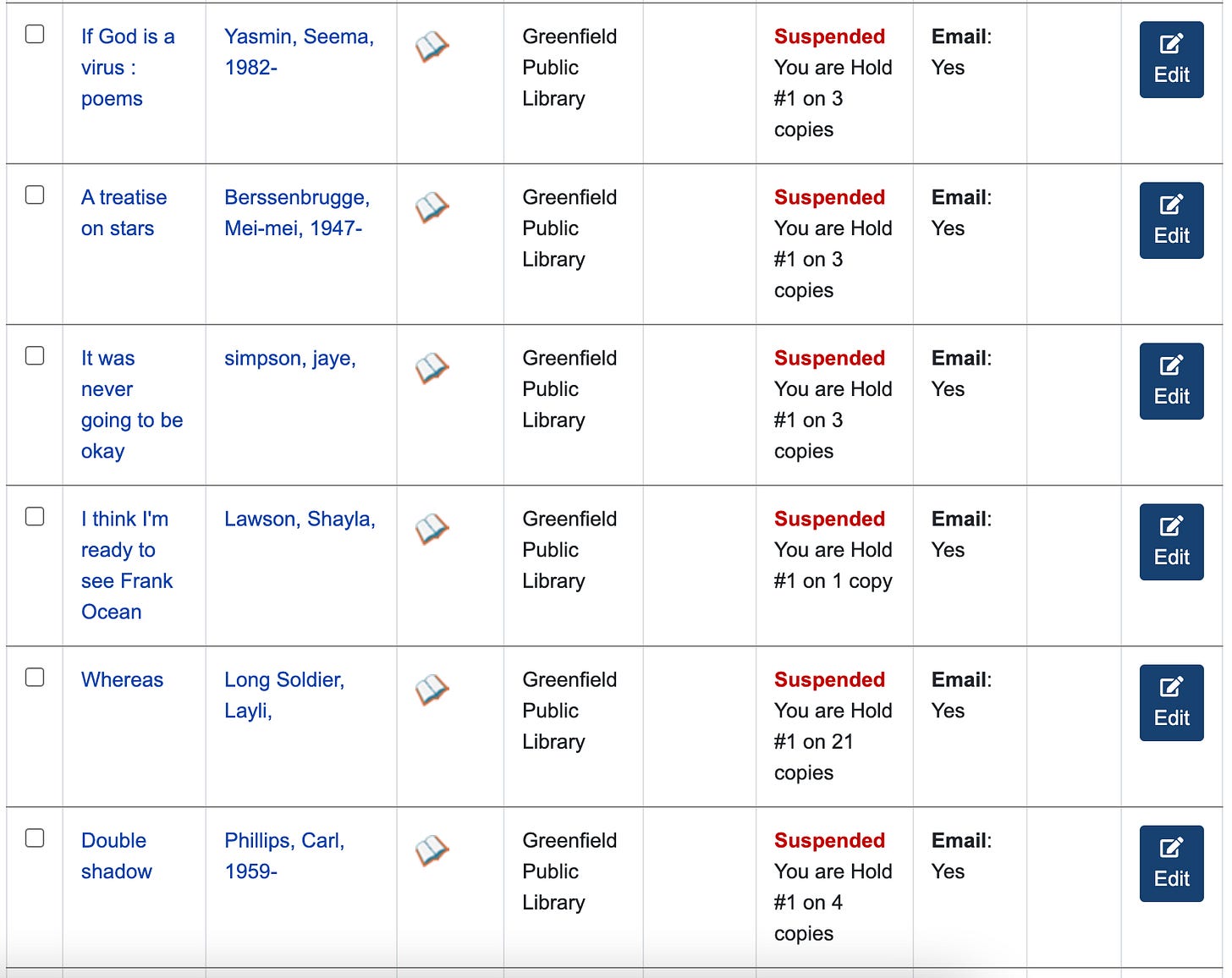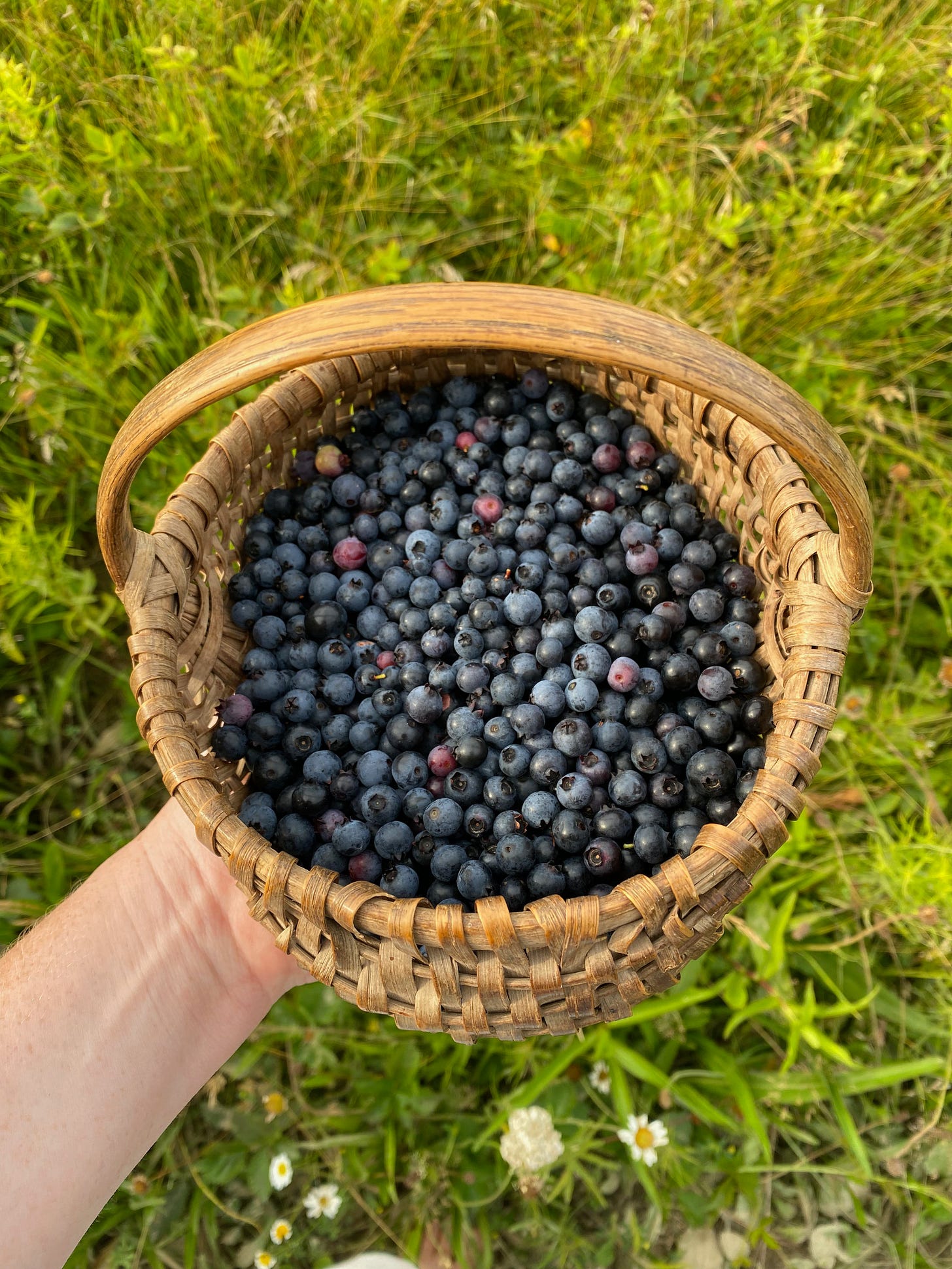Volume 2, No. 29: Life-Changing Journeys + Buttery Almond Cake with Mascarpone Filling
Greetings, book-eaters and treat people! If you live somewhere that’s been affected by the recent heat wave, I hope you’ve managed to get through it, maybe with ice cream. Earlier in the summer I decided that ice cream is a perfectly acceptable dinner when it’s too hot to move. It doesn’t make the heat any easier, but somehow, it helps.
I wrote a newsletter about journeys last fall. Those journeys were both physical and metaphorical, and not necessarily life-changing. The journeys in these books are not necessarily long, arduous ones. But they are all journeys that change the lives of the characters that undertake them. Some of the journeys are there-and-back again—characters leave home and then return. Others are one way: characters set out for new places and do not come back. And while all of these books are about actual, physical journeys—people travel—they are also, of course, about emotional journeys.
The Books
Backlist: The Blue Sky by Galsan Tschinag, tr. by Katharina Rout (Fiction, 1997, English translation 2020)
I bought this because it’s part of the Seedbank series from Milkweed Editions. From their website:
Seedbank gathers works of literature from around the world that foster conversation and reflection on the human relationship to place and the natural world—exposing readers to new, endangered, and forgotten ways of seeing the world
Earlier this year I read When the Whales Leave, also from the Seedbank series, which I absolutely loved. So I bought this one knowing nothing about it, and I’m glad I did.
The Blue Sky is set in the Altai Mountains in northern Mongolia. It’s a sad, beautiful, quiet coming-of-age story about Dshurukuwaa, a Tuvan boy struggling with his people’s rapidly changing way of life. The Tuvan are a nomadic people whose livelihood has long relied on shepherding. Dshurukuwaa grows up in his family’s yurt, listening to his grandmother’s stories, helping with the chores, and tending to the flock. He’s a keenly observant narrator, relating the ordinary events of his life easily and directly. He’s close with his grandmother, and cherishes her in a way his siblings don’t—he’s always eager to listen to her stories, travel with her, and learn from her. His other companion is his beloved dog, Arsylang.
Not much happens in this novel, although it is full and bright and bursting with life. This is my favorite kind of book to read: small books about ordinary everyday realities. Dshurukuwaa’s everyday reality is far removed from mine. I knew almost nothing about the Tuvan people or the Mongolian landscape before I picked this up. So of course I was interested in all the details—the descriptions of how to care for sheep and yaks, the materials yurts are made with, the various uses of milk, the changing weather. But more than that, I loved getting to sink into Dshurukuwaa’s world as he sees it. There is something close and familiar about this novel, even though it’s about a culture and a way of life so different from my own: Here is a child, going about is life. Here is what scares him. Here’s the food he loves best. Here’s what he’s looking forward to. Here’s what makes him sad. Here he is playing with his dog. Here he is annoyed that his parents aren’t being open with him. Dshurukuwaa describes all of this with thoughtful openness:
Most beautiful were the winter evenings. The stove would drone or hum, and the sound would travel and make the kettle resonate while the meat bubbled inside, and the smell would flow from the kettle and would, moment by moment, grow dense until it seemed to send out its tendrils and blend and become one with everything we could see in the flickering light. In these moments I believed I could sense life itself. The sensation was as corporeal and palpable as if I stood in a river and felt the prickling, cooling water on my skin.
The life-changing journey is not one that Dshurukuwaa undertakes, but one that his siblings do: they go away to boarding school. In the afterward, Galsan Tschinag writes about growing up during a period when the government pushed for assimilation of the Tuvan people, and about how communism, and later capitalism, impinged on and forever changed his people’s way of life. All of this is reflected in what happens when Dshurukuwaa’s siblings leave home for school in the city, and come back changed. Dshurukuwaa senses that nothing will ever be the same.
It was also good to know that Brother and Sister would return. Not so good was the fact that they would have to leave again, and that they would always have to leave again. And that was not the end of it. I could feel myself growing more and more upset because before long it would be my turn to leave behind the flock, Aryslang, our home, Father and Mother, the Black Mountains—everything that had been part of me.
After his siblings return, things start changing quickly. His grandmother dies and his father begins using new outside technologies with disastrous consequences (CW for animal death). Dshurukuwaa is heartbroken. And this is where Tschinag leaves us, with Dshurukuwaa coming into a deeper understanding of himself and his changing world. It’s not a happy book, but it is not wholly bleak, either. More than anything, it feels true, a witness to change in all its beauty and terror. It’s a love letter to the Altai Mountains, to one boy’s flock, to a beloved dog, to small joys.
Frontlist: Spear by Nicola Griffith (Historical Fantasy)
I’ve been struggling to read fantasy for 2+ years, so every time I come across a magical book I can get into, it feels like a gift. And this is such a gift of a book. It’s a retelling of Arthurian legend, and like the best retellings, it is expansive. It draws on the King Arthur stories that have come before, but it is very much its own thing.
Peretur, Griffith’s reimagining of the Welch hero Percival, grows up in an isolated cave in Wales with her powerful mother. She lives close to nature, roaming through the hills and moors, free to explore. She knows her mother has secrets, knows there is magic inside her and inside her mother and inside the cave they live in, but this is mostly in the background. She’s content to wander and use her growing powers—until she isn’t. So she disguises herself as a man and sets out on a quest to find herself, glory, a destiny.
One of the many things I love about this novella is the impetus for Peretur’s journey. She loves her home and she loves her mother, and she’s been happy there. But she’s also restless. Telling her mother why she wants to leave, she says:
But that world is full of people who belong to their place, who belong to one another, who belong to themselves. And they have names! Out in the world all is different and new!
She leaves not to find anything in particular, and not to escape, but to discover herself. To become herself. To find her name. “A name, she thinks, is what makes a person who they are. A name is how they know themself.”
So she rides away from home and has many adventures, which lead her to Caer Leon, King Arthur’s court. All of the familiar characters from Arthurian legend are there—Arthur, Guinevere, Lancelot, Merlin, and Nimue, the Lady of the Lake. But they do not feel familiar—or, more accurately, they feel heart-familiar to me, because they are queer, they are disabled, they are people of color. Slowly—so slowly—Peretur finds belonging with them, and in building these relationships she discovers the thing she was looking for all along: home, belonging, family—not in opposition to her mother, but in addition to her mother. There is adventure and action aplenty, but this is really a book about queer family-making. Queer family-making as a route to understanding yourself and the world. Queer family-making as a form of magic. Queer family-making as possibility and doorway. Queer family-making as the thing that jolts you out of smallness, that calls you to be braver, more vulnerable, more understanding, fiercer.
The writing is just delicious, by turns gauzy and vivid. I devoured the whole thing in one day; every time I put it down I immediately picked it back up again. Griffith writes about so many disparate things with such attentiveness and creativity—the Welch landscape, war, sex, food, longing, regret, armor, a castle. There’s a wonderful physicality to her writing, and to the novel itself. There’s also a sapphic love story that is basically perfect: tender, honest, hot, funny.
In her author’s note, Griffith writes about her inspirations, research, and process, as well as the importance and (and historical accuracy!) of including queer and disabled people and people of color in retellings like this. The whole book is just under 200 pages, and every single one of them is lovely.
Upcoming: My Government Means to Kill Me by Rasheed Newson (Historical Fiction, Flatiron, August 23rd)
This is a coming-of-age story about Trey, a gay Back man who, in 1985, at eighteen, leaves his family's mansion in Indianapolis to make his own way in New York. He walks away from a trust fund, in part to define himself outside of the elite Black society his parents belong to, and in part to escape a painful past and the lingering despair and guilt he feels over his brother’s death. In New York, he volunteers for a butch dyke who runs an AIDS hospice, fights back against an exploitative landlord, joins ACT UP, and generally makes a lot of good trouble while trying to figure out who he is.
I loved the way this book made me think about history and how we talk about it. It's a fictional memoir, and it reads like a contemporary queer elder recounting his triumphs, missteps, and false starts for a younger generation. It's also full of real historical figures. For me there was something so powerful in Newson's rendering of people like Bayard Rustin and Larry Kramer. Obviously, these renderings are characters, but there is a lot of spaciousness in imagining how their lives might have changed Trey's.
Trey meets Bayard Rustin at the Mt. Morris Baths, a bathhouse in Harlem that was a social center and gathering place for gay Black men. They have long conversations before and after cruising—about politics, the civil rights movement, gay liberation, activism, their lives. I loved these scenes so much, loved how they rendered the baths a sacred place, not in spite of sex but because of it. Mt. Morris is the first place Trey can be his whole self—young and horny, a little lost, eager to fight, ready to learn, serious, silly. He goes to Mt. Morris for sex, and he goes to Mt. Morris to talk to Rustin about politics, to ask his advice, to find comfort. There’s no delineation between the secular and the holy, the physical and the intellectual.
So I kept cruising and teasing; and making small talk; and giving head; and reading books in the break room; and letting my towel slip for attention; and gossiping with the regulars; and having sex in the rented rooms, the sauna, and the hallways with newbies; and seeking wisdom from Rustin; and solving crossword puzzles with Marcel. I’d found the haven for my mind, body, and soul. Everyone needs such a place. Don’t reject the space you gravitate toward just because the windows aren’t stained glass and the congregation isn’t saved.
This theme—the impossibility (and futility) of compartmentalization, and the messy reality of how political activism and community liberation intersect with intrapersonal relationships and childhood trauma and mundane desire—plays out in lots of other ways throughout the book. Newson gets into what activism is for and what it means to be part of a movement.
There’s a scene when Trey is talking with an activist who volunteers with the Gay Men’s Health Crisis. He’s just done his first shift at an AIDS hospice, and the older activist, Peter, takes him out for drinks afterward. He asks Trey why he’s drawn to the work, what he’s in it for. He asks, “What’s your selfish goal?” Trey is utterly baffled by the question, and it takes him a long time to come up with an answer. Peter is not satisfied until he does. This moment collapses the space between motivation and aspiration. Trey badly wants to do good in the world. He becomes more and more certain of that as he settles into life in New York—it’s a coming of age story, and he does a lot of growing. But he also wants friends. He wants to belong to something. And he’s carrying around an enormous weight—guilt over his brother’s death. He wants to atone. He’s not pure. He doesn’t get involved in ACT UP purely for the sake of liberation. His motivations are messy, sometimes selfish, often deeply personal. I love how honestly Newson explores why people join movements, and how movements—whatever their aims—are often also catalysts for personal transformation.
The whole book is funny and sexy and yes, it's preachy, but that feels right, feels exactly like how an older Trey would tell his story. It's not dry, whiny preachy—it's wise, matter-of-fact, this-is-how-it-is preachy. Intensifying this enjoyable preachiness are tons of footnotes. They explain historical figures, places, events, slogans, slang, etc. At first I thought these were written in Trey’s voice, but Trey is sometimes mentioned by name in them, so maybe they are intended to be read as authorial asides. Either way, they blur the connections in the text, collapsing the space between author, character, and reader.
It’s out August 23rd, and you can preorder it here.
The Bake
Believe it or not, I’ve already shared a version of this cake in this newsletter—it’s based on the same recipe from Snacking Cakes as Buttered Walnut Cake with Cinnamon Glaze. But these two cakes could not be more different! This one is light and airy, highlighted by a simple sweet and tangy lemon filling. The walnut cake is warm and toasty, full of nuts, candied orange, and spices. It’s just another reason why I love this cookbook so much—the recipes lend themselves to endless variation.
Buttered Almond Cake with Lemon Mascarpone Filling
I doubled the original recipe to make a sandwich cake and filled it with a luscious mascarpone cream. If you want to make a single layer cake, halve the ingredients. You can still make the filling and either frost it or dollop it on top, but halve those ingredients, too.
Ingredients
For the cake:
2 sticks (1 cup or 227 grams) unsalted butter
220 grams (2 cups) almonds, finely chopped
300 grams (1 1/2 cups) regular or toasted sugar
4 eggs
330 grams (1 1/2 cups) sour cream
2 tsp vanilla extract
1 1/2 tsp salt
320 grams (2 1/2 cups) all-purpose flour
1 Tbs baking powder
1/2 tsp baking soda
For the filling:
1 pound (454 grams or 2 cups) mascarpone cheese
8 ounces (227 grams or 1 cup) sour cream (crème fraîche also works)
Zest of one lemon, to taste
1 tsp vanilla
85 grams (3/4 cup) powdered sugar, to taste
Make the cake: Preheat the oven to 350. Butter two 9-inch round pans and line the bottoms with parchment.
In a medium saucepan, melt the butter over medium heat. Continue cooking until it starts to bubble and hiss. Add the almonds, and cook, stirring constantly, until the nuts are nicely toasted and the butter turns golden brown, 3-4 minutes. Pour into a large bowl and set aside to cool for a few minutes.
Add the sugar, eggs, sour cream, vanilla, and salt, and whisk until combined. The mixture should be relatively smooth. Add the flour, baking soda, and baking powder, and continue mixing until homogenous.
Divide the batter evenly between the prepared pans and gently smooth the tops. Bake for 25-35 minutes, until puffed and golden, and a tester inserted in the center comes out clean. Let the cakes cool in their pans for about 15 minutes before turning them out to cool completely on a wire rack.
Make the filling: Using a handheld whisk or electric beaters, whip the mascarpone and sour cream in a chilled metal bowl until the mixture thickens and holds its shape. Add the lemon zest, powdered sugar, and vanilla, and continue whisking until smooth. Taste and add more sugar or lemon zest to taste.
Assemble the cake: Place one cooled cake on a serving plate. Drop a few big spoonfuls of the filling onto it and spread evenly with an offset spatula. Gently place the second cake on top. Use the remaining filling to ice the sides of the cake. I like the semi-naked look, but you’ll likely have extra filling; if you want you can ice it completely.
The Bowl and The Beat
The Bowl: Any-Grain Salad That’s Mostly Pickled Onions
This is a salad made up of leftovers and random veggies and herbs from the pantry. You can use any grain—what makes it so tasty is the pickled onions. Start by making those: thinly slice a large red onion and put it in a bowl with several glugs of red wine vinegar, a spoonful or two of honey, and a good pinch of salt. Stir and let sit for at least 30 minutes—the longer the better. Meanwhile, add the rest of the ingredients to a big bowl: a few cups of cooked grain (I used farro), a can of chickpeas (if you feel like it), a few big handfuls of chopped fresh herbs (I used mint and thyme), some crumbled feta, salt and pepper, and a drizzle of olive oil. Add in the pickled onions with their dressing and mix well.
The Beat: Destination Unknown by Bill Konigsberg, read by Pete Cross
This is a coming-of-age story about two gay boys in 1987. I’ve enjoyed some of Konigsberg’s previous books, although none of them have wowed me. But I was moved by what he wrote about this book on Goodreads, where he talks about being a gay teenager in NYC in the late 80s, being terrified of AIDS, coming out to his family, and how many years it’s taken him to be able to finally write this story. So I decided to pick it up. I’m enjoying it so far.
The Bookshelf
A Picture
I’m getting ready for The Sealey Challenge! I’m not going to hold myself to reading a whole book of poetry every day this year, but I am excited to spend some quality time with poetry in August. I’m about to release a whole bunch of library holds from suspension—this is only a small fraction of them.
Around the Internet
I did a guest rec for my fellow Rioter Cassie’s newsletter, Reading Under the Radar. It was a delight to do, and her newsletter is a delight, too!
Bonus Recs About Life-Changing Journeys
Raceless by Georgina Lawson is about several life-changing journeys. The Undocumented Americans by Karla Cornejo Villavicencio is about how journeys change lives. I know I’ve raved about it before, but Finding Home by Hari Conner is possibly my favorite book about a life-changing journey ever.
The Boost
How to Show Up For Your Friends Without Kids — and How to Show Up For Kids and Their Parents: This recent newsletter from Anne Helen Petersen resonated with me. Like, RESONATED. I read it through once but I will be coming back to it soon, because wow is there a lot in it that I needed to hear.
This doesn’t usually happen, but I just found about this festival dedicated to Native literature, the James Welch Native Lit Festival, happening July 28-30 in Missoula, MT—also via Anne Helen Petersen’s newsletter. The festival is both a space for Native artists to talk publicly about writing and craft, and a way to honor the work of James Welch, who was a revered writer and member of the Blackfeet Tribe. Petersen interviewed Sterling HolyWhiteMountain, the organizer and visionary behind the festival, and it’s really worth a read. The lineup of panelists for this festival is incredible—I wish I could go, but since I can’t, I made a donation.
As always, a little bit of beauty to send you on your way: It’s been a good year for blueberries. I picked this basket last week, and yesterday while I was at work my parents picked 12 more cups. Get excited about some blueberry recipes soon!
Catch you next week, bookish friends!





